Minestrone is probably the most well-known of Italian soups. However, there isn’t actually one traditional recipe for it. In fact, there are many. It really depends on where in Italy this soup is made and on the available seasonal vegetables at the time. This recipe for minestrone with pesto from Liguria in North West Italy is one of my favourites.
Not only is it packed with fresh seasonal veggies, but the addition of the local basil pesto Genovese really makes it uniquely flavourful.
What makes this minestrone from Liguria so unique is the addition of pesto Genovese. In other words, basil pesto. Basil pesto is practically a culinary staple in Liguria. In more or less its present form, it has been made there since the 1800s. However, food historians say that it probably developed from an ancient Roman sauce called ‘moretum’ and a Medieval crushed garlic and walnuts sauce called ‘agliata’.
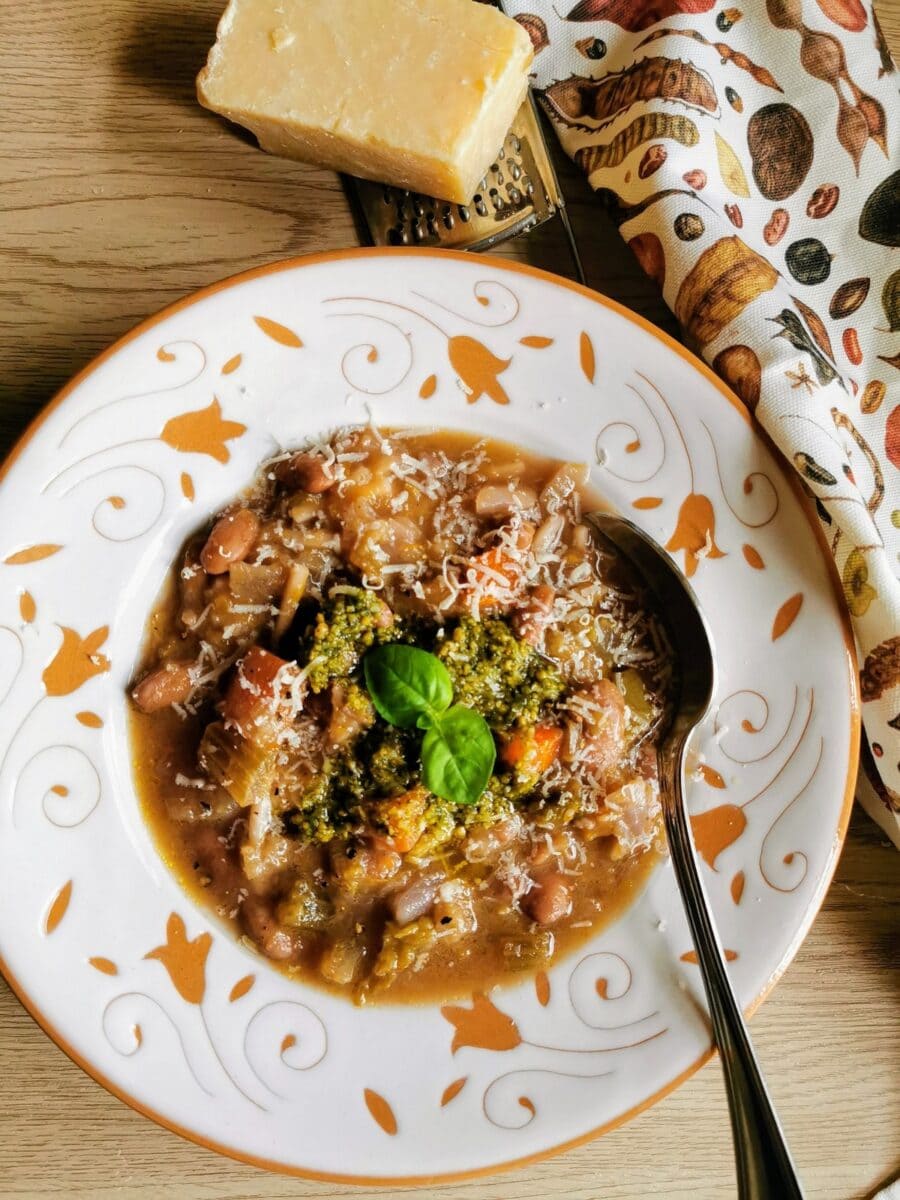
The Ligurians use basil pesto in many dishes, particularly with pasta. They even have an official recipe published by the Genova Chamber of Commerce. The official recipe has 7 ingredients; Ligurian basil leaves, Mediterranean pine-nuts, Vessalico garlic cloves, Ligurian extra virgin olive oil, coarse sea salt and two types of cheese, aged Parmigiano and Pecorino from Sardinia.
Of course, most of us have to use locally sourced basil leaves, nuts, garlic and olive oil. It may also not be possible to find both cheeses. In fact, I often make basil pesto with just Parmigiano (but don’t tell anyone from Genova!).
What exactly is minestrone?
Minestrone is a soup with pretty antique origins. Even the Ancient Romans made a version with onions, garlic, carrots, asparagus, lentils and mushrooms plus, whatever else they could find at the time. They just boiled all the ingredients in water.
Over time, other ingredients have been added to minestrone in Italy. Tomatoes and beans only arrived in Europe after the discovery of the Americas in the 15th century. So, these are relatively more recent additions.

But, traditionally, minestrone is a seasonal vegetable soup which normally has some thickening plant-based ingredients such as squash, potatoes or legumes, plus, a variety of veggies cut into pieces and rice, pasta or grains.
Ingredients in minestrone with pesto Genovese.
Ligurian minestrone with basil pesto has lots of veggies in it. However, some of those traditionally depend on the season. All versions of this recipe have beans, usually borlotti or white cannellini beans, as well as some type of pasta.
As a summer soup, you are more likely to find it made with diced tomatoes, zucchini, green beans, fava beans (broad beans), sometimes eggplant and freshly made basil pesto. Some people add green peas and borrage is popular, as is chard.
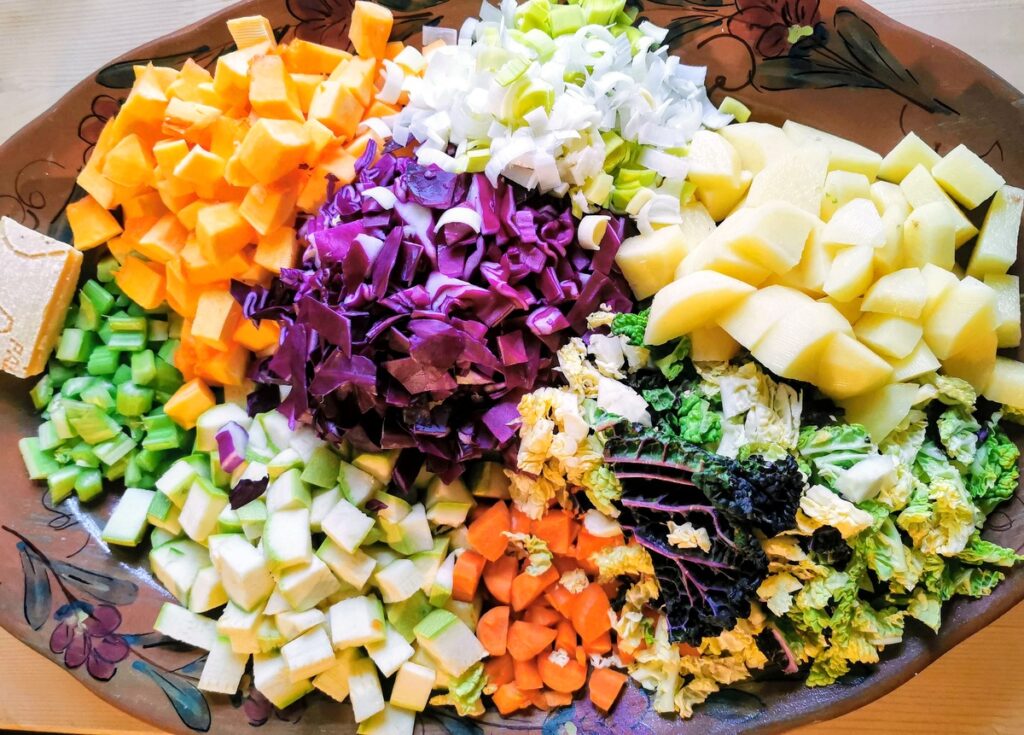
In winter, this vegetable soup often has squash or pumpkin, cabbages, kale, leeks, potatoes, celery, and carrots. These are the veggies I used along with zucchini. However, nowadays, many vegetables are available year-round. So, it’s actually possible to make this Ligurian minestrone with your favourite veg whenever you want! And many people do!
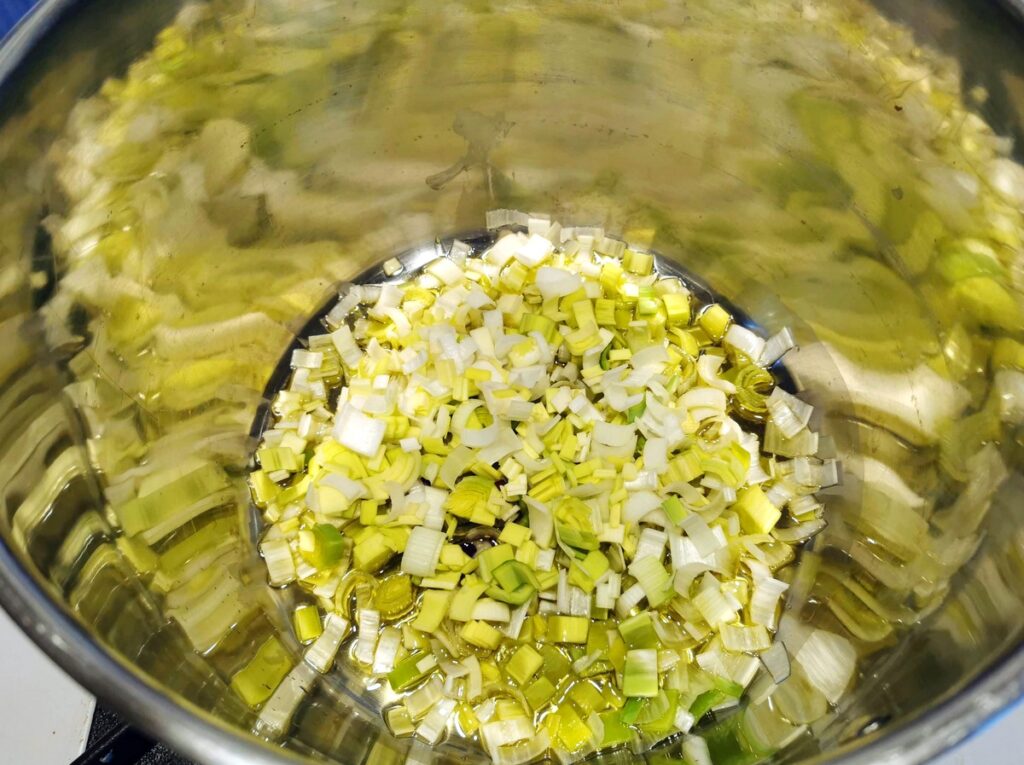
One ingredient I can’t always find all year is fresh basil. So, for this version of minestrone with pesto, I used a ready-made pesto from a company called Girolomoni. This is actually one of my favourite pasta makers but they also produce other traditional Italian foods. You can read more about this company in my post about my visit to them.
When making homemade pesto particularly for this minestrone, Ligurians don’t include pine nuts. But if you have pesto you’ve made yourself, of course you can use it even if it has pine nuts.
The beans
In Liguria, they often use local bean types called ‘grixi’ and ‘balin’ for minestrone alla Genovese. But, most recipes call for borlotti (cranberry beans). However, if you can’t find those, cannellini (white beans) or broad beans are fine too.
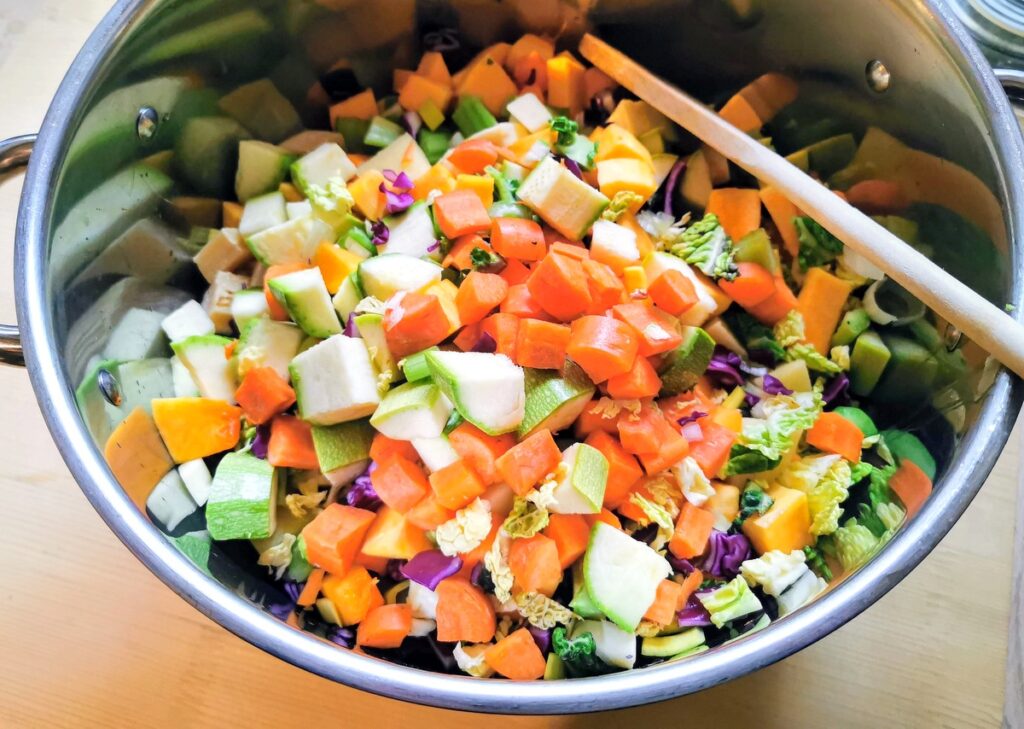
Traditionally the beans are fresh ones or dried ones which have been soaked overnight in cold water. But, of course, you can use canned beans instead. The difference between dried and canned is that you won’t have the nutritious bean cooking water to add to the soup.
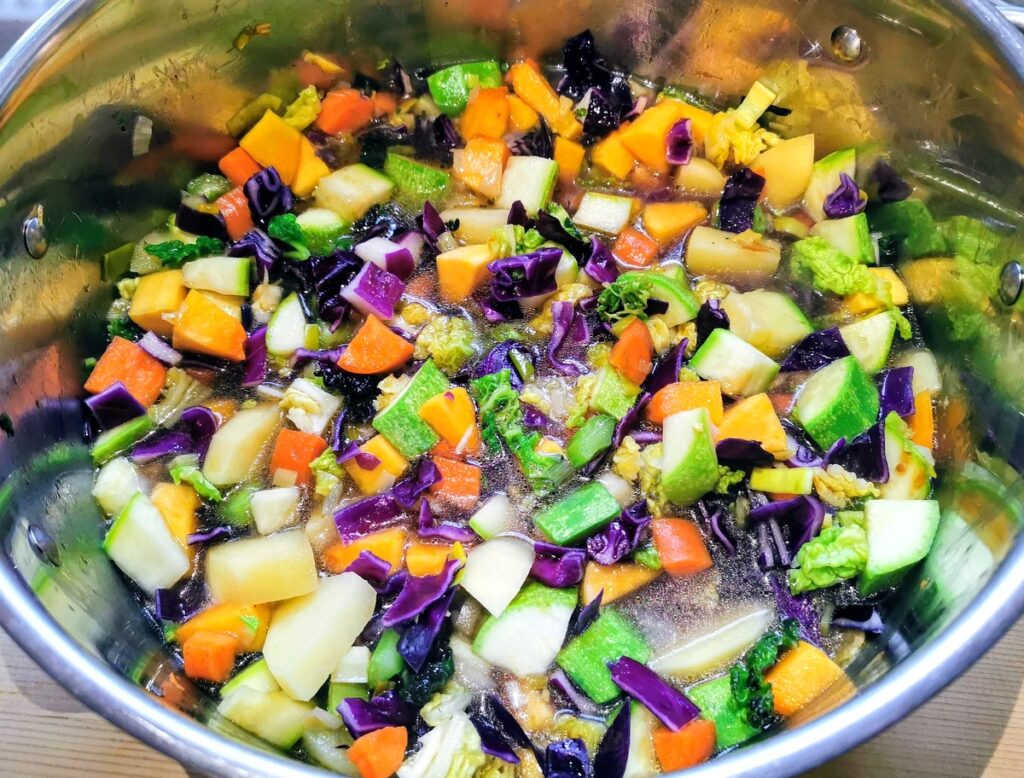
Some recipes actually use the bean cooking water as the base for the soup. In other words, the veggies are added to the beans once the latter are half cooked. I cooked the beans separately and added them with some of their cooking water to the soup, once the veggies had cooked a while.
The pasta.
I used broken spaghetti for my minestrone with pesto. This is the most traditional way. Although, pasta shapes such as ditalini or other soup pastas (pastina) are popular too. Rice can also be used instead if you like it better. Or, you can leave the pasta out altogether if you’re on a low carb diet or just prefer it that way.
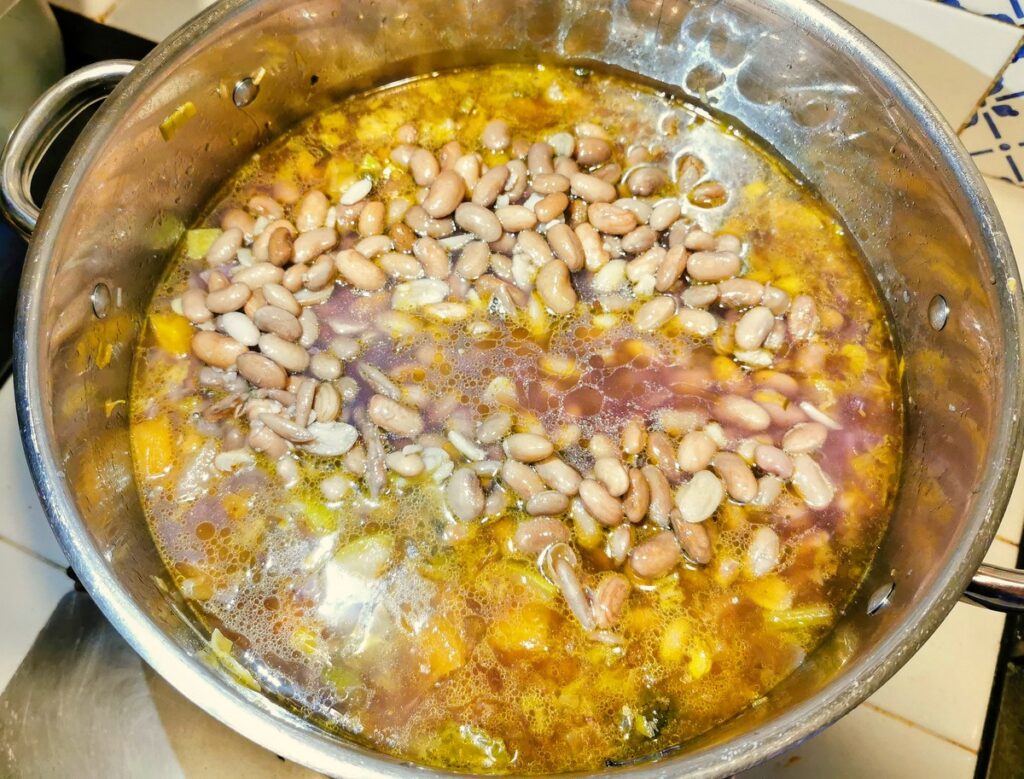
Making Ligurian minestrone alla Genovese.
Unlike other minestrone recipes, Ligurian minestrone doesn’t usually have a soffritto as a base (finely chopped onions, celery and carrots sautéed in olive oil). In some versions, all the veggies are just cooked together. I followed a recipe that involved just sautéeing the leeks and then I added all the other ingredients.
Step by Step instructions.
- Prepare all your veggies as described in the recipe card.
- Sauté the sliced leeks in olive oil in a large soup pot or large saucepan!
- Add all the other vegetables to the pot.
- Mix all the veggies and add water and a good pinch of salt. Cook on a medium heat for 30 minutes.
- Add the beans and some of the bean cooking water (if you used dried beans). Cook for another 30 minutes on a medium-low heat.
- Add broken spaghetti or other pasta and cook until pasta is al dente. (I changed pots and used a Dutch oven to do this!)
- Serve in large bowls with pesto, ground black pepper and grated Parmigiano (if required). NB: the pesto should be added after the soup has been removed from the heat. This will preserve the pesto’s bright green colour and fresh flavor.
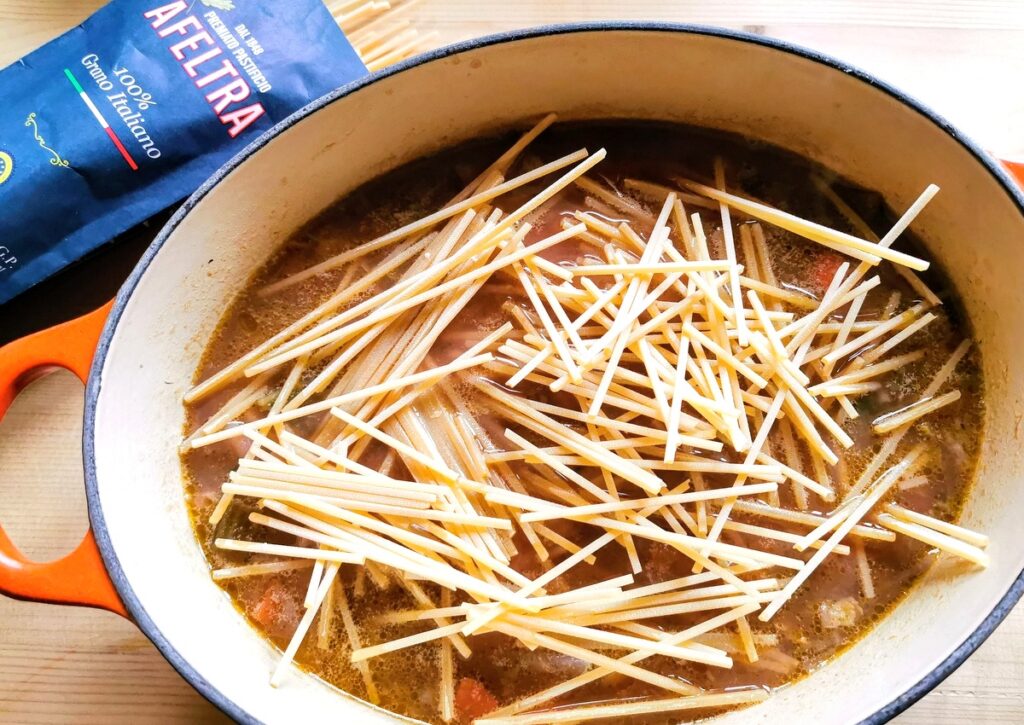
Add a Parmigiano crust for extra flavor.
If you’re not vegetarian, a delicious addition to this minestrone with pesto is to add a parmesan rind to the soup. This really adds a lovely flavour.
But, since Italian Parmigiano Reggiano is made with animal rennet, it’s not suitable for vegetarians. The same goes for traditional pesto as it has Parmigiano or pecorino in it. However, you can use a vegetarian parmesan cheese and you can make it without cheese too.
Make your minestrone in advance.
This soup tastes even better the next day and is great for meal prep. However, if you want to make it in advance, cook the pasta when ready to serve because it will become softer and maybe even mushy when left in the soup for more than a day.
What to do with leftovers.
This Italian minestrone soup can be kept in the fridge in an airtight container for up to 3-4 days. You can also freeze it for up to 6 months. But preferably without the pesto and pasta. Bring the frozen soup to room temperature, bring it to a simmer in a large pot and then cook the pasta in it. Finally, serve with pesto.
Let me know what you think.
Whichever combination of veggies you use to make this recipe, I’m sure minestrone with pesto alla Genovese is going to become a favourite for you too! It’s uniquely delicious, nutritious, warming and filling. Pure comfort food and one of my favorite healthy meals.
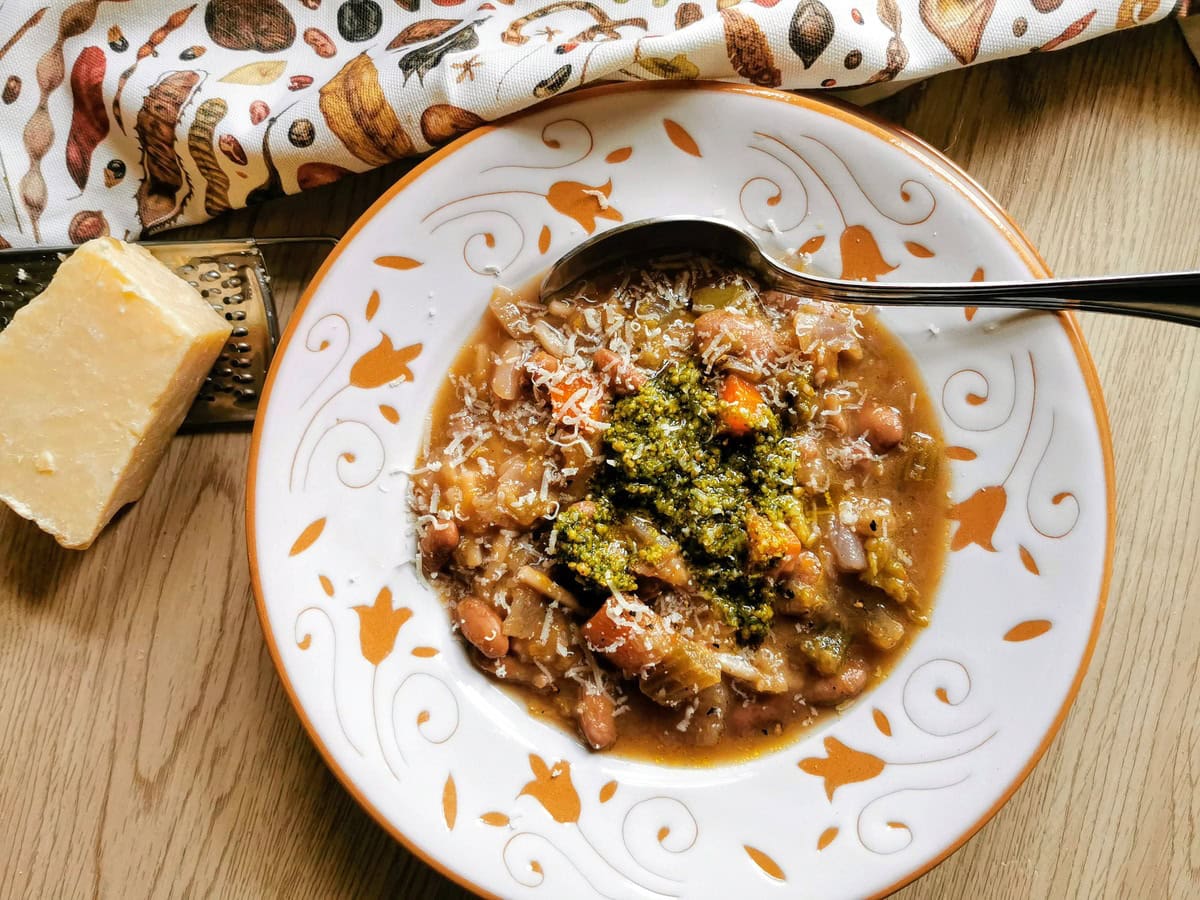
If you do try this Ligurian minestrone, I’d love to hear what you think. Please write a comment here on the blog or post a comment on the Pasta Project Facebook page.
Your feedback means a lot to me!
Buon Appetito!
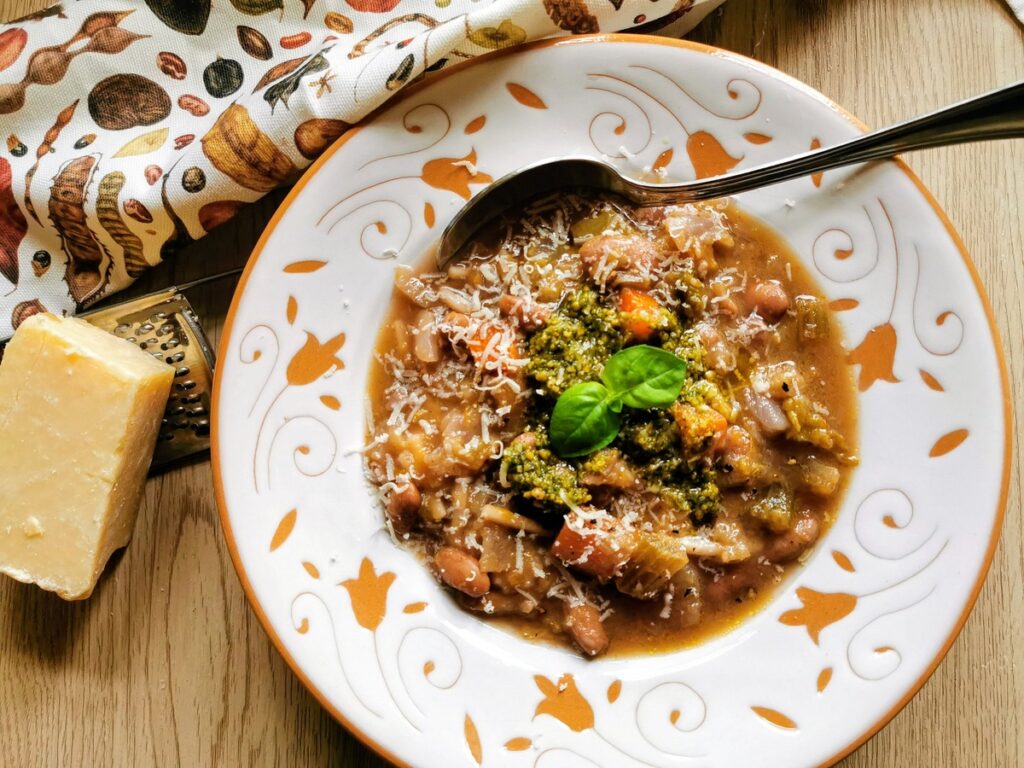
Other soup with pasta recipes.
- Tuscan minestrone with orzo pasta
- Pasta with beans soup (pasta e fagioli)
- Romanesco broccoli and pasta soup
- Canederli in broth
Save this recipe for later?
If you want to save this recipe for later, you can print it, bookmark this page or save it to Pinterest.
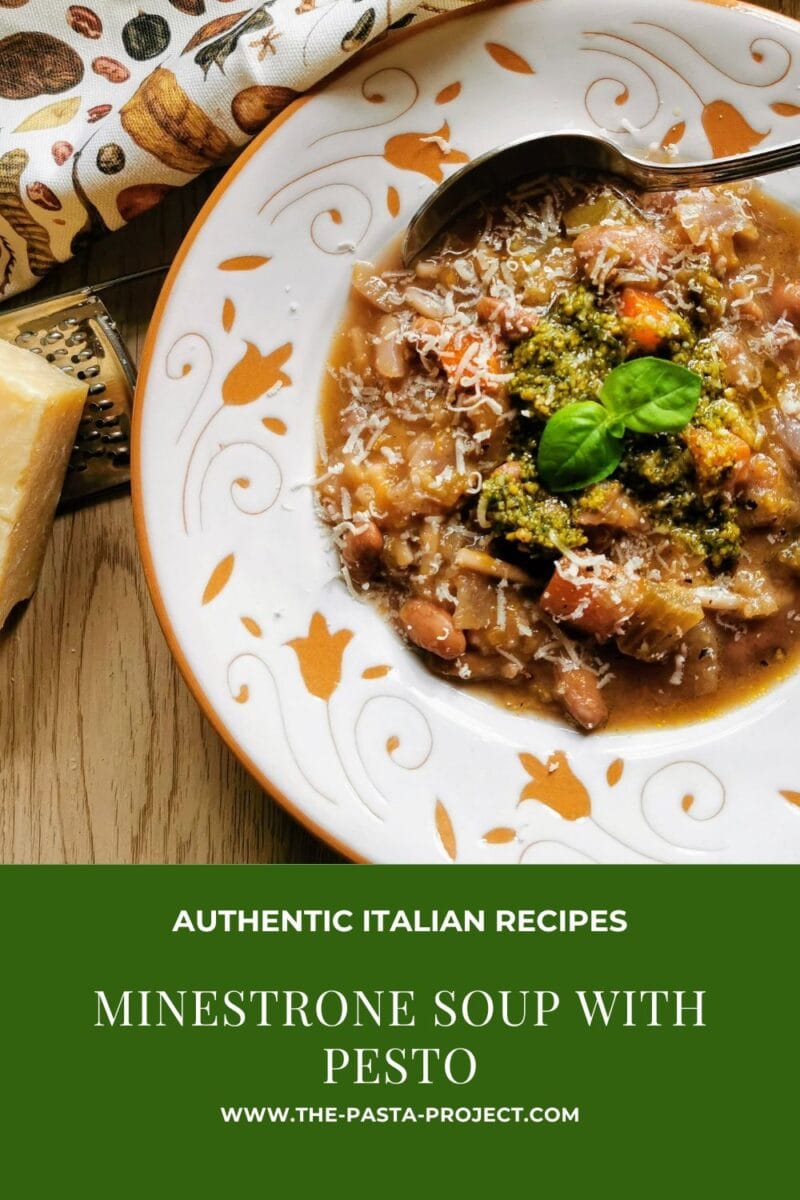
Want to know more about my life in Italy? Why not subscribe to my newsletter? New subscribers get a free recipe e-book too!
Pin me for later!
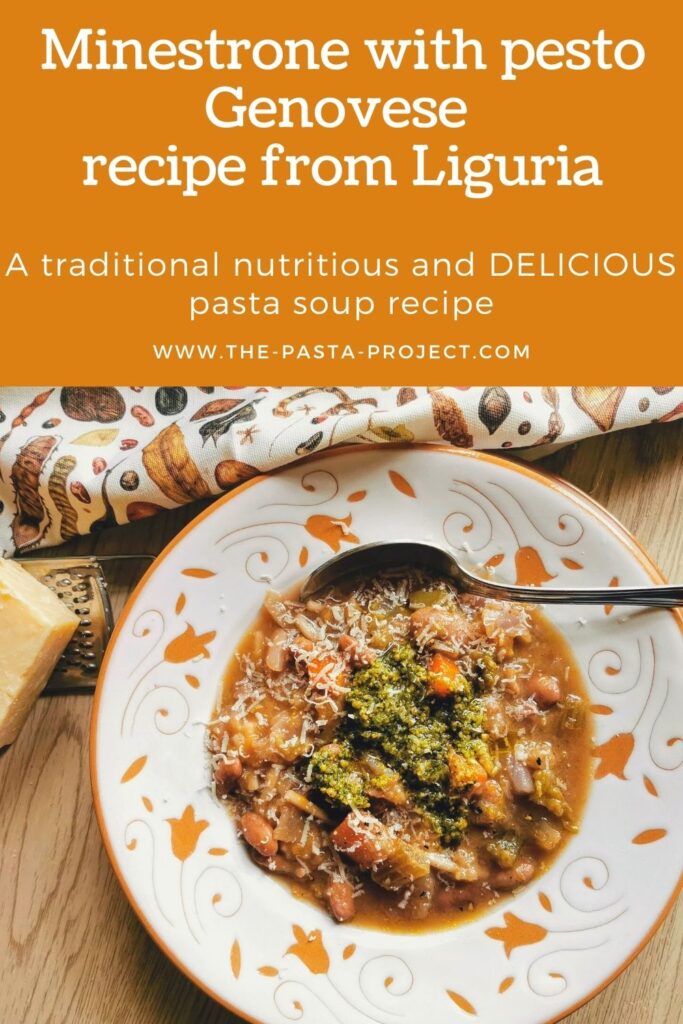
If you are interested in learning how to make homemade pasta and different types of gnocchi, check out my shop page for some great video online courses from my friends in Rome! Nothing beats learning to make pasta from Italians! Plus while you’re there why not order a copy of my newly published autumn/winter pasta recipes cookbook!?
Reader Interactions

